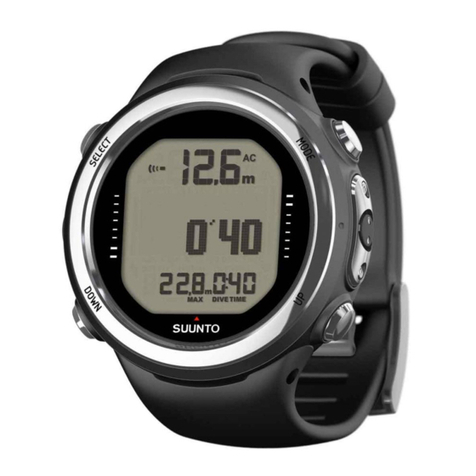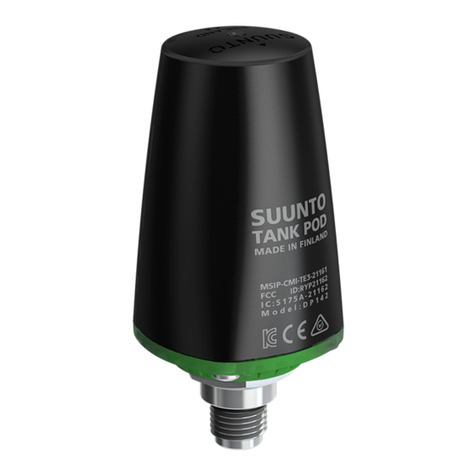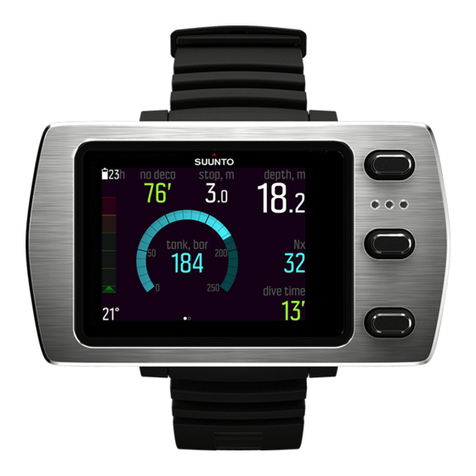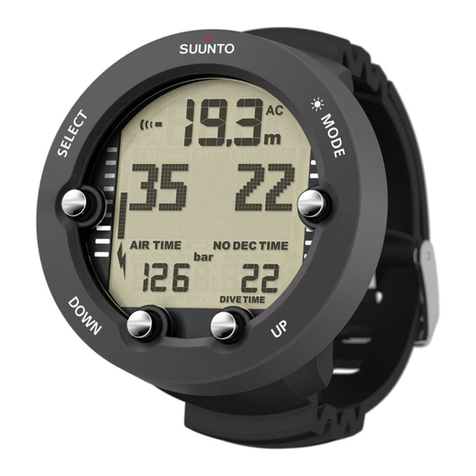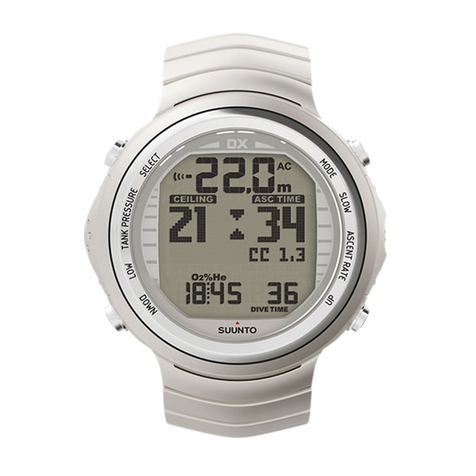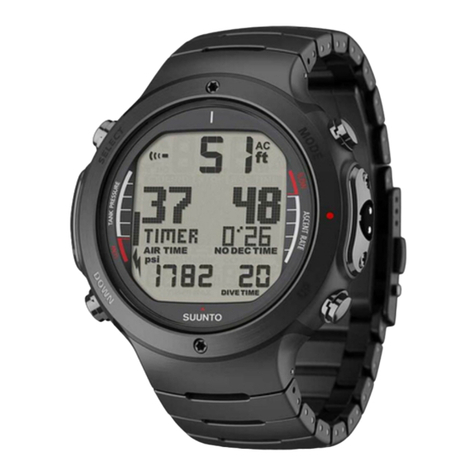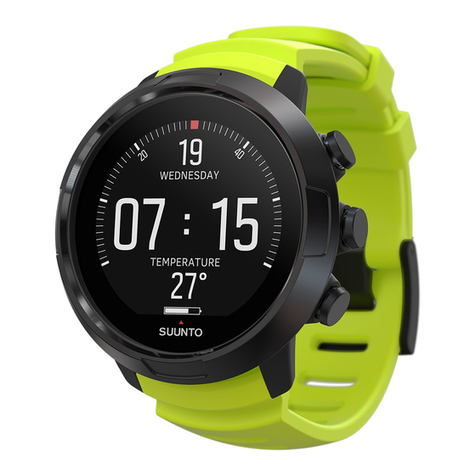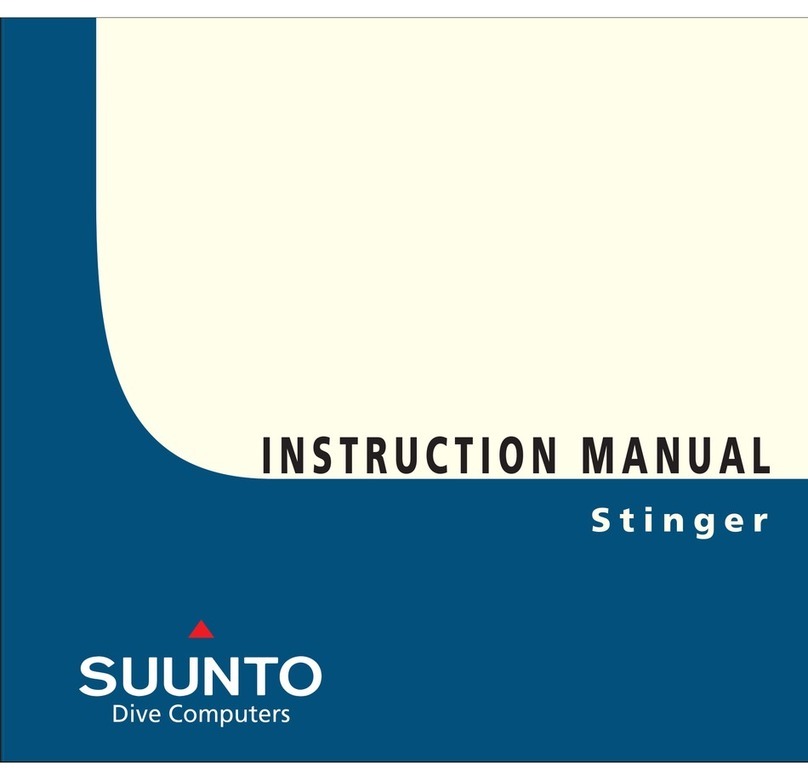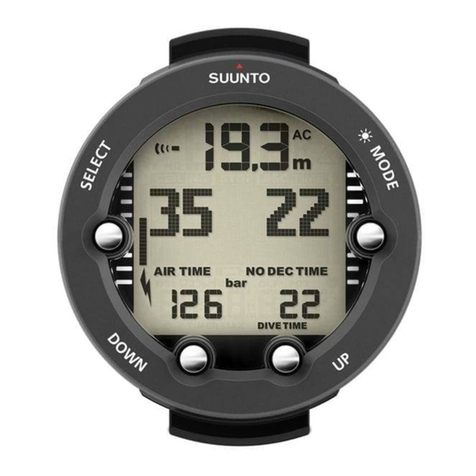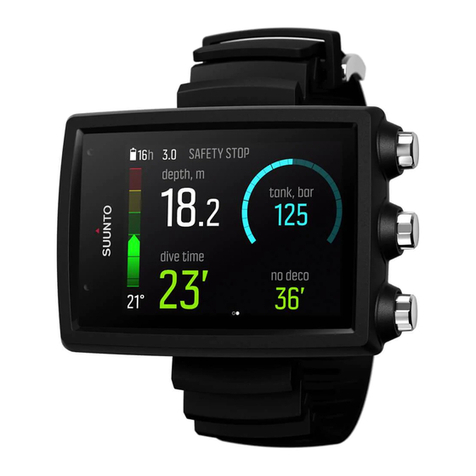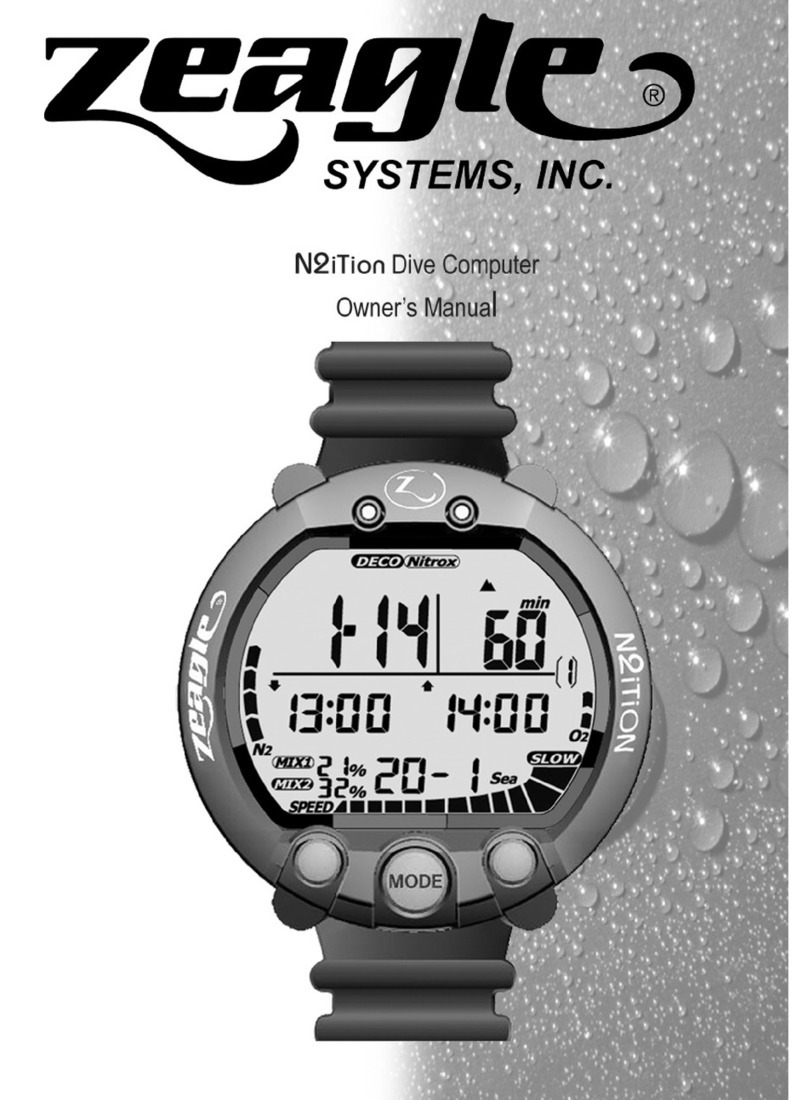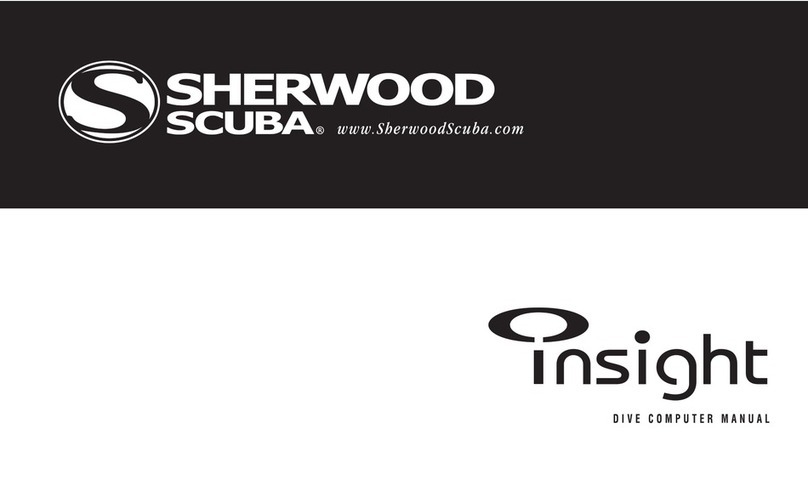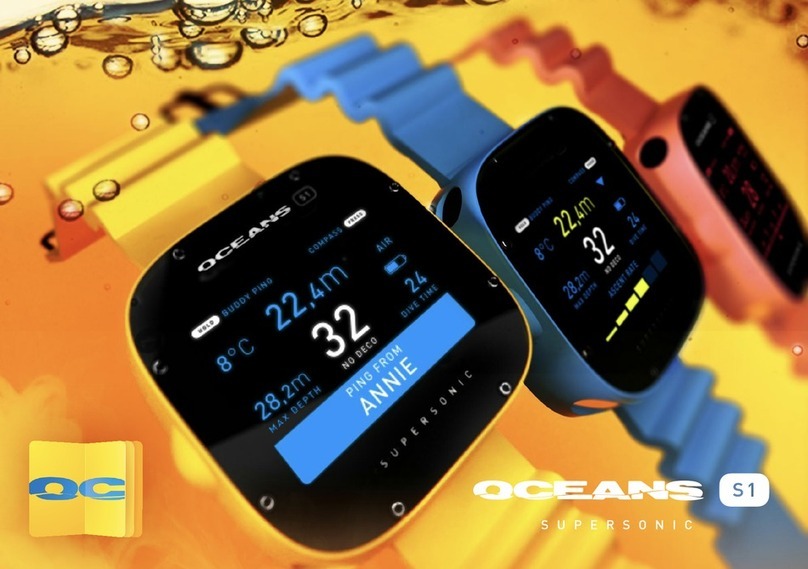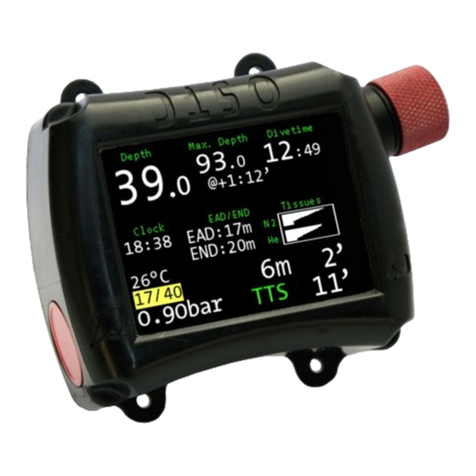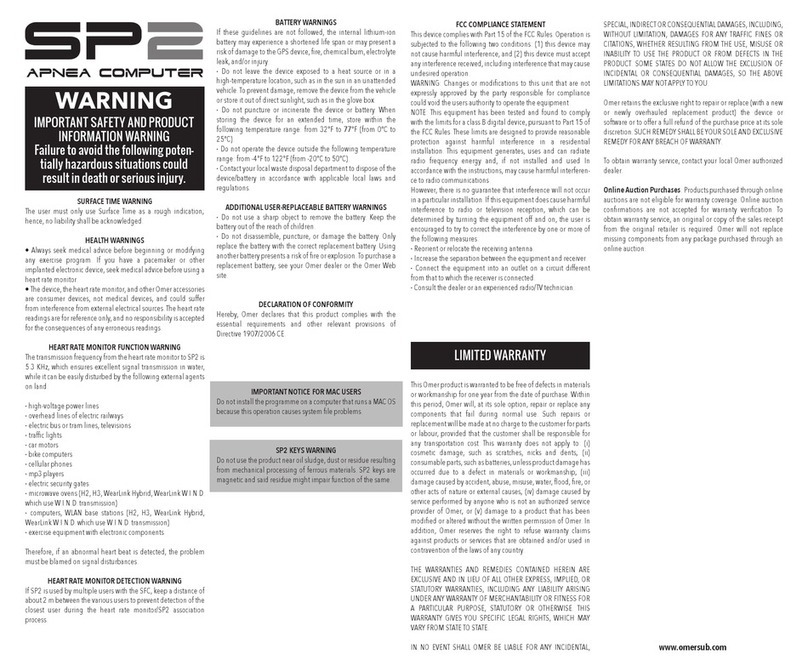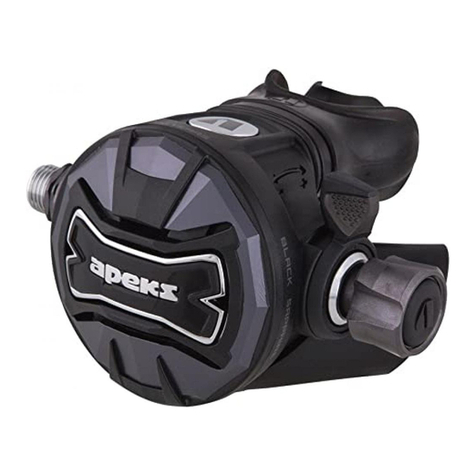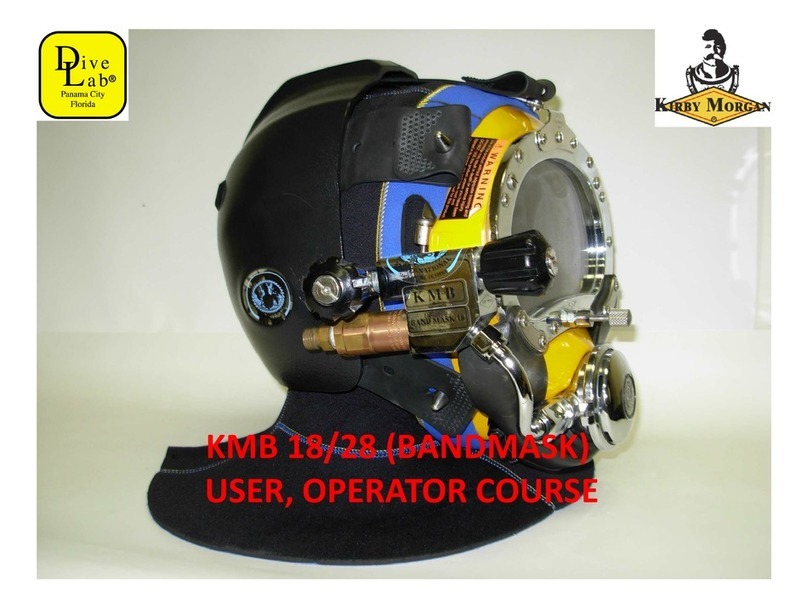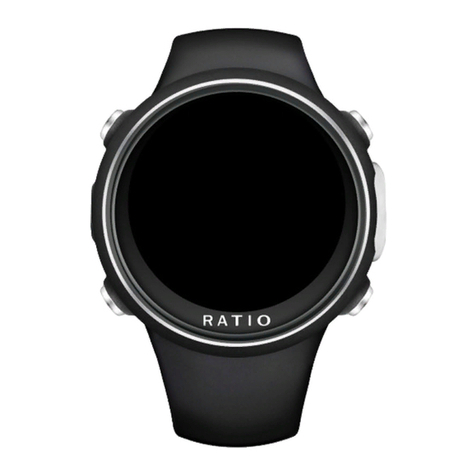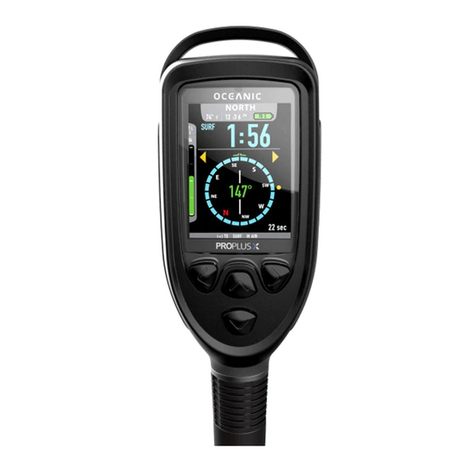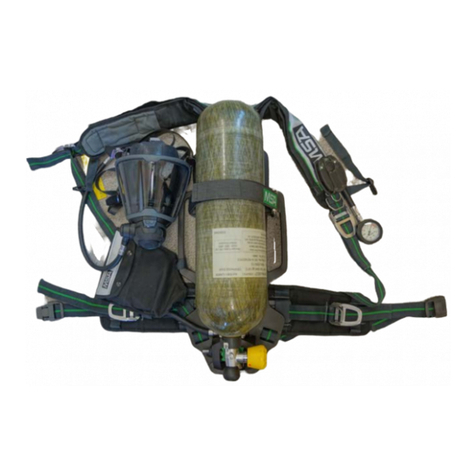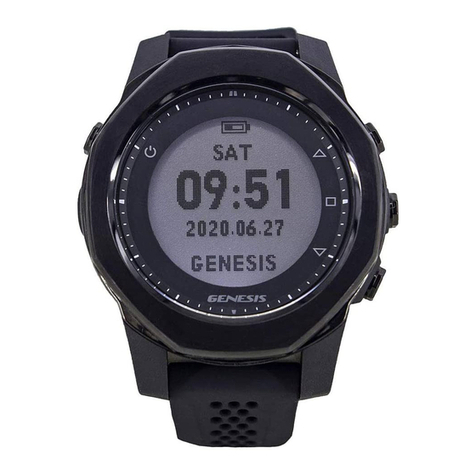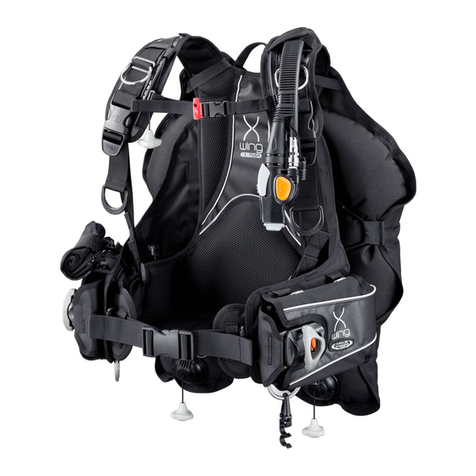- REVERSE PROFILES where the diver spends most of the dive at shallow
depths and then descends to the maximum depth shortly before surfacing.
- CONSECUTIVE DIVES where the diver performs repetitive dives to approximately
the same maximum depth with only short surface intervals between dives. The
risk of decompression sickness increases when depth and the number of
repetitive dives increase and when the surface intervals are shortened.
- MULTIDAY DIVES repetitive dives performed during several consecutive days.
- DECOMPRESSION DIVES any dive during which the no-decompression limit has
been exceeded or the diver is advised by the computer that he may not return
directly to the surface.
WARNING!
DIVE PRACTICES WHICH INCLUDE THE ABOVE DESCRIBED "HIGHER RISK
DIVE PROFILES" ARE BELIEVED TO INCREASE THE RISK OF DECOMPRESSION
SICKNESS AND AS SUCH CONSIDERED POTENTIALLY DANGEROUS AND
SHOULD BE AVOIDED EVEN IF THEY CONFORM TO THE MATHEMATICAL
MODEL!
Dive Computer Limitations
While the FAVOR AIR is based on current decompression research and technology, the
user/diver must realize that the computer cannot monitor the actual physiological
functions of an individual diver. All decompression schedules currently known to the
authors, including the U.S. Navy Tables, are based on a theoretical mathematical model
which is intended to serve as a guide to reduce the probability of decompression
sickness.
The mathematical model uses a constant ascent rate of 10 m/min [33 ft/min] already in
the early stage of ascent to prevent the formation of microbubbles. Therefore, it is
critical that a proper ascent rate is always used.
The reader/diver is forewarned that individual physiological differences, severe
environmental conditions andpredive activities, especially those which tend to increase
dehydration, may increase the risk of decompression sickness.
As a safety precaution, Suunto recommends that divers using the FAVOR AIR should
maintain no less than 10 minutes no-decompression time remaining at all times during
the dive. This is especially important for divers in poor physical condition, in cold water
or other arduous conditions.
Historically divers have been advised to always include a margin of safety in their diving
activities. Suunto supports these practices and strongly recommends that the diver
make the deepest portion of the dive near the beginning of the dive and gradually
progress into shallower depth, allowing time for a 3 to 5 minutes
